Lights, cameras, action
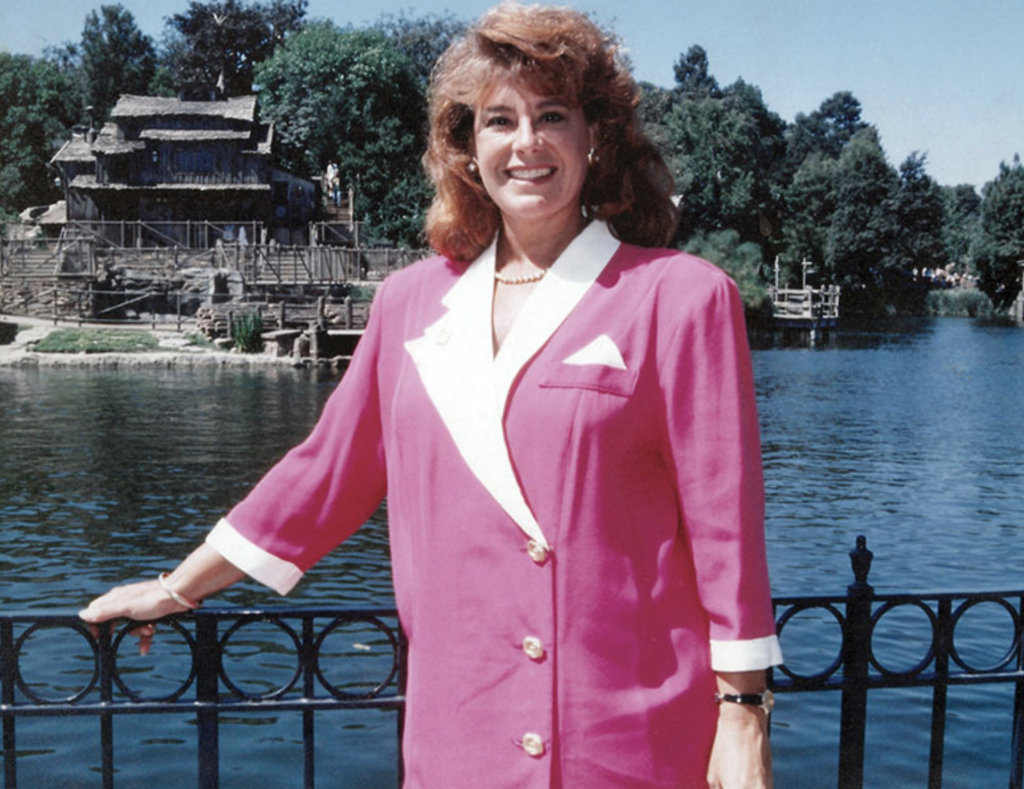
At just 20 years old, Barnette Ricci – as part of the touring group, “The Young Americans” – had helped Bob Hope kick off the 1967 United Crusade, supporting the United Way and the American Red Cross. So when she joined Disneyland shortly thereafter, the up-and-coming choreographer, singer, and dancer was ready for showtime…
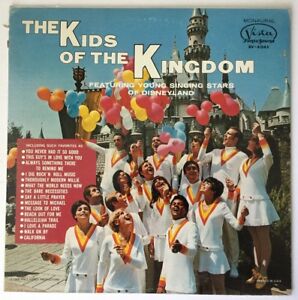
In 1969 – fresh to Disney’s ranks – Ricci organized and choreographed a show for “The Kids of the Kingdom,” a group of bright-eyed, clean-cut teenagers (including Ricci herself) who sang and danced. A sort of in-park successor to The Mickey Mouse Club, the earnest Kids even got their own music releases on Disney’s Buena Vista Records, singing classic and contemporary hits like “What The World Needs Now,” “Walk On By,” “Always Something There to Remind Me,” “The Bare Necessities,” and “This Land is Your Land.” Ricci’s leading role in the Kids of the Kingdom made her a well-known face around Disneyland Entertainment, and in fact, she’d swiftly be handed new responsibility in the next big project coming down the road… or, in this case, the street; Main Street.
Given that tremendous effort had gone into the launch of Walt Disney World in 1971, Walt’s poor little Disneyland was looking and feeling a little left behind. Disneyland needed a boost, and given the tremendous work of the late-60s that had focused on retaining guests until after dark, then-CEO Card Walker requested that Vice President of Entertainment Bob Jani (YAH-nee) look into fast-tracking a new project for Disneyland. The vibrant, energetic, and enthusiastic Ricci was just the person to tackle the project.
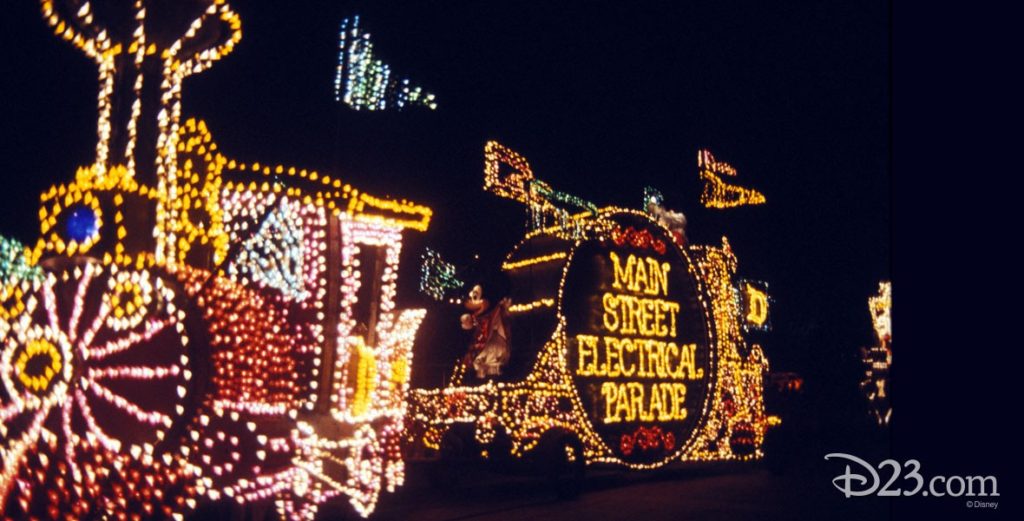
Stepping off on June 17, 1972, Disneyland’s nighttime lineup was changed forever by “a spectacular festival pageant of nighttime magic and imagination” in “thousands of sparkling lights.” Part I of our Night Magic series explored the Lost Legend: The Main Street Electrical Parade and how Disney’s designers powered on the incandescent icon, with Ricci herself as creative director and choreographer for the long-running legend.
Of course, the other half of the Main Street Electrical Parade – namely, its “electro-synthe-magnetic musical sounds” – were largely the product of Disney audio engineer Don Dorsey. It wasn’t just that Dorsey remixed the iconic “Baroque Hoedown” electronic tune that underscores the parade; he’d also invented radio-transmitted “trigger zones” that would see float-specific audio tracks seamlessly blend, “following” each float down the route.
The celebrational pageant wasn’t just a hit; it was a game-changer. Arguably, Disney has spent the last fifty years looking for a parade to land in the hearts, minds, and ears of onlookers the way the Main Street Electrical Parade did. But just as importantly, the parade softly introduced the notion that Disney Parks could indeed have something to do after dark – something worth waiting for nightfall – that would be one-of-a-kind.
Rivers of sound
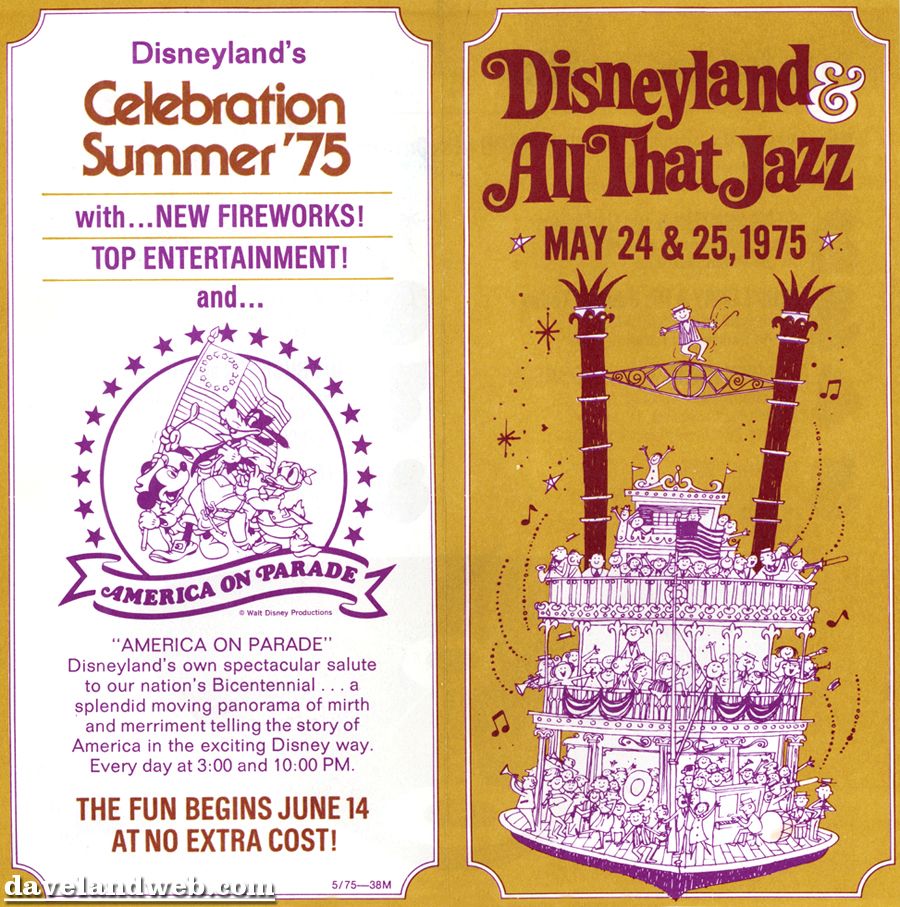
Lucky for us, Barnette Ricci was not a one-hit-wonder. The story of Ricci’s contributions to Disney entertainment didn’t end with the Main Street Electrical Parade. She’d go on to direct Disneyland and Magic Kingdom’s America on Parade (1975 – 1977) as well as the Golden Horseshoe Revue and Diamond Horseshoe Revue in California and Florida, respectively.
In the summer of 1977, Disneyland debuted its first true “river show,” the Rivers of America Entertainment Spectacular. According to entertainment writer Jim Hill on the Disney Dish podcast, this short-lived show – presented in the summer of 1977 and 1978 – was more or less a stopgap measure to absorb crowds between the 1977 closure of the Lost Legend: Mine Train Through Nature’s Wonderland and the 1979 debut of its replacement, Big Thunder Mountain Railroad. However, it was also the first time that the Mark Twain and Columbia were cast as floating stages, with characters performing on the island, and Ricci and her Kids in the Kingdom troupe even performing from the circling Keelboats before anchored barges launched finale fireworks.
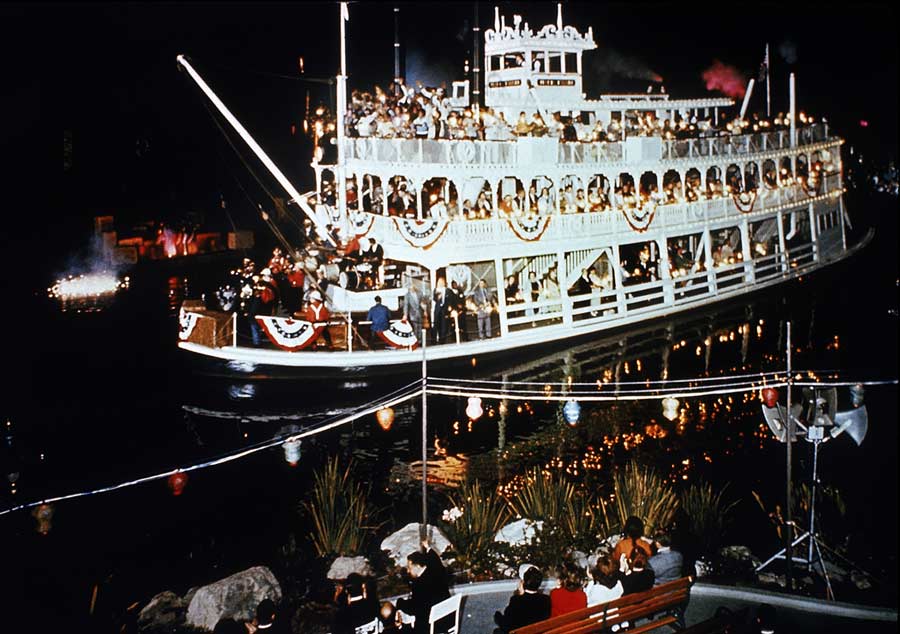
So perhaps it’s natural that – to hear her tell it to D23 – Barnette always maintained a fascination with that area around the Rivers of America:
“I always felt that the [Rivers of America] was a truly unique venue, but I wanted to use it in a new way to create something different for our Guests.”
In 1981, Ricci orchestrated the Rollin’ River Revue, a Saturday night summer concert series. The summer-long event booked big name acts in surf, soul, jazz, funk, country, and pop music – ranging from Frankie Avalon to Jose Feliciano; Kool & the Gang to Earl Scruggs – to perform on a floating stage anchored in front of Tom Sawyer Island.
The event’s success inspired Disneyland’s Entertainment Department to go big. That year, they requested the funds to install a permanent stage on Tom Sawyer Island (which, to gain Imagineering’s permission, needed to blend into the island by day, including concealing any lighting rigs and sound systems that would rise by night). Given a (literal) new stage to experiment with magic, a few ideas were tossed around that you might not believe…
Phantoms, Fantasia, and Laserphonic Fantasy
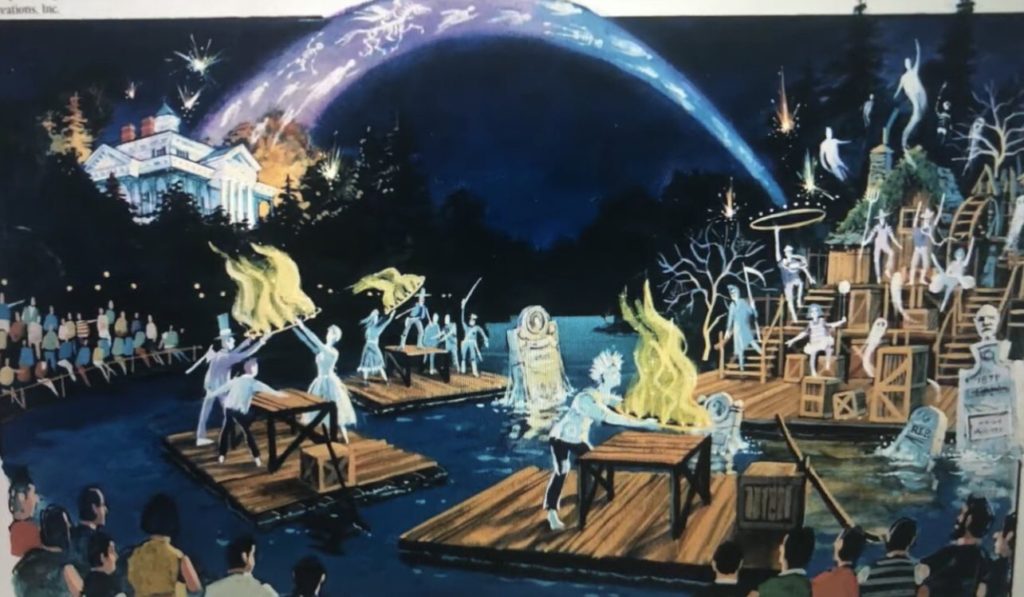
In the early 1982, Don Dorsey and Director of Creative Entertainment Adam Bezark envisioned a very different use for the Tom Sawyer Island dock and the watercraft of the River: a show they called the River Haunt. This truly-captivating nighttime experience would’ve utilized Tom Sawyer Island’s new disguised-dock stage and featured pyrotechnics, boats, massive props, and upwards of 50 live performers in a silly and spooky nighttime show filled with magic, music, and mayhem.
As our Member-exclusive storyboard gallery below shows, this full-length nighttime show would’ve begun with a lonely gravedigger making his way to the island just as the “Silly Spooks” of the Haunted Mansion across the river make their nightly, frightfully fun field trip – a clever interpolation of Disneyland’s own “in-house” intellectual property, capitalizing on one of the most fabled attractions of all time.
Imagine: fog enshrouding the island as ghostly dancers descend; graves bubbling up from the Rivers of America as ghouls crawl forth; the cider mill becoming a ghostly organ with bellowing pipes rising from the water to mist onlookers; a ghoulish organist beckoning “Grim, Grinning Ghosts” across the water; knights and ladies performing larger-than-life magic tricks on “foolish mortals;” hearses gliding across river; a Frankenstein monster whose mad scientist creator accidentally sets the water on fire…
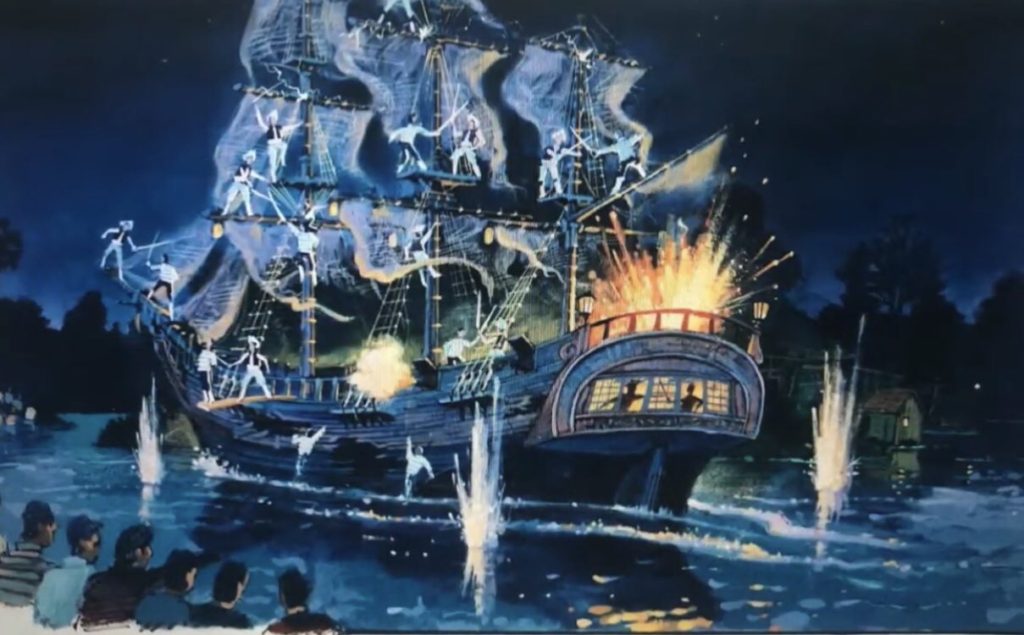
… Even the Columbia would get in on the act, cast as a haunting ghost ship drifting aglow against the moonlight with ethereal fog left in its watery wake…
A testament to the millions of never-built Disney Parks concepts that must exist in long-sealed archives and Imagineers’ filing cabinets, it’s likely that we wouldn’t even know about the River Haunt if it weren’t for these rare renderings and for Don Dorsey’s discussion of the show 35 years after its concepting in an interview with Dana Daniels. It’s also easy to imagine an “alternate reality” where the River Haunt remains to this day as a beloved after-dark spectacle exported to Disney Parks around the globe!
But for its time in the early 1980s, the show quickly grew too large. Even if then-CEO Card Walker was supportive of the concept, the ambitious project would require a massive cast; the construction of a backstage marina; the draining of the Rivers of America; the rebuilding of New Orleans Square to accommodate a tiered viewing area… Long story short, the River Haunt was simply a bit too ambitious for Walker’s Disney.
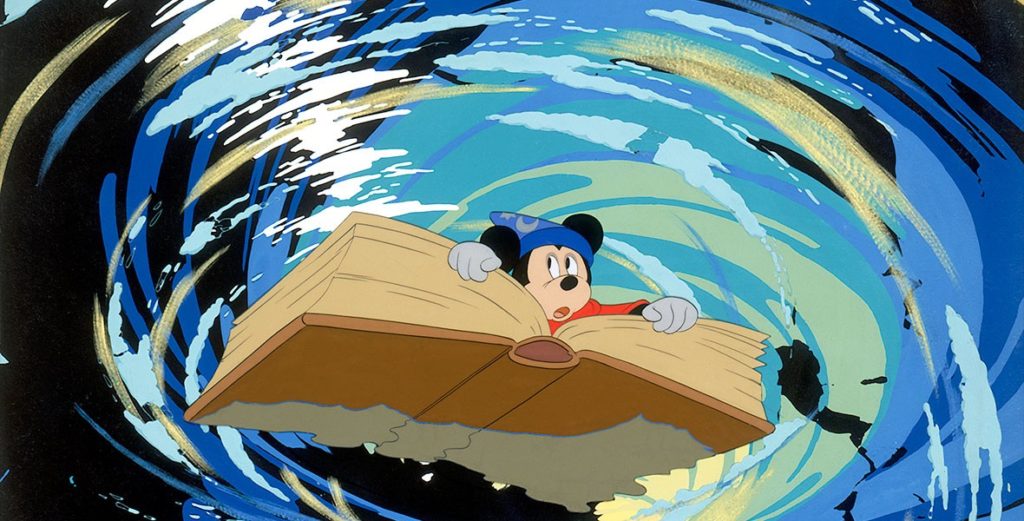
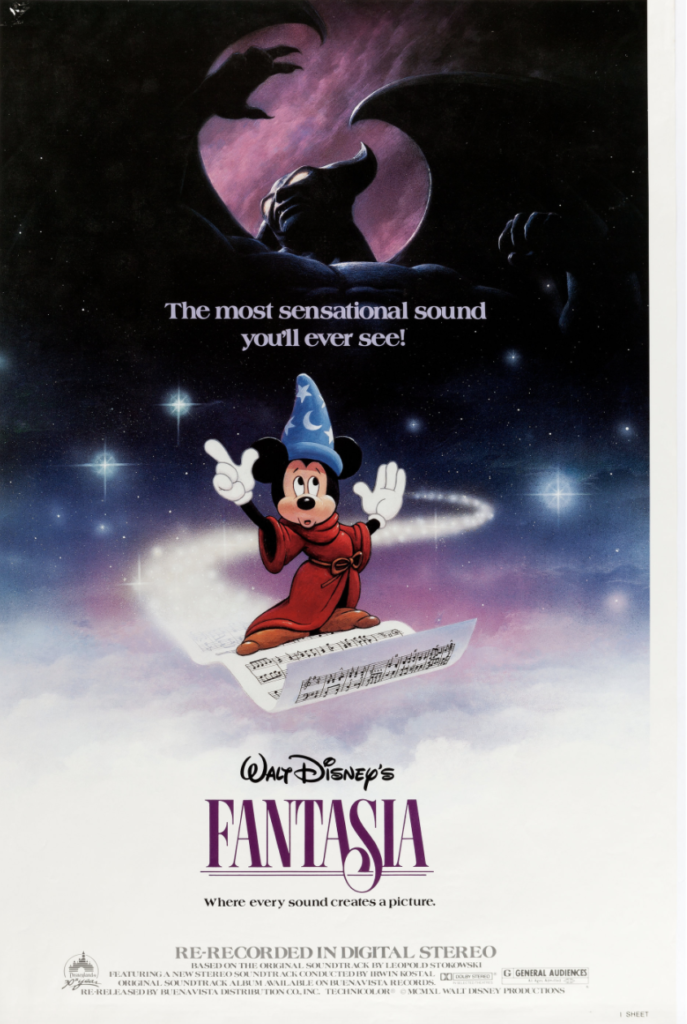
Thinking smaller, then, designers briefly considered a nightly show hinging on Fantasia –Disney’s 1940 anthology film with animated segments set to classical music orchestration. Though Fantasia contained two of Disney’s most legendary animated scenes (Mickey in “The Sorcerer’s Apprentice” and the demonic Chernabog in “Night on Bald Mountain”), it might’ve seemed a strange pick for the summer of 1982… However, that spring, Disney had commissioned the re-recording of Fantasia‘s score using the cutting-edge Dolby Stereo recording process (which would eventually lead to a wide re-release in 1985).
Designers allegedly considered using Tom Sawyer Island’s newly-installed audio system in a nightly Fantasia showcase. Reportedly, this nightly performance would’ve seen a live orchestra aboard the Riverboat play in sync with Fantasia footage projected onto screens around the Island. However, the notion of erecting cumbersome projection screens for viewers encircling the river cooled enthusiasm for the concept. So neither the ambitious River Haunt nor the simplistic Fantasia showcase came to be, leaving Disneyland without a purpose-built nighttime show on the Rivers of America. In fact, the first “nighttime spectacular” wouldn’t make its debut at Disneyland at all.
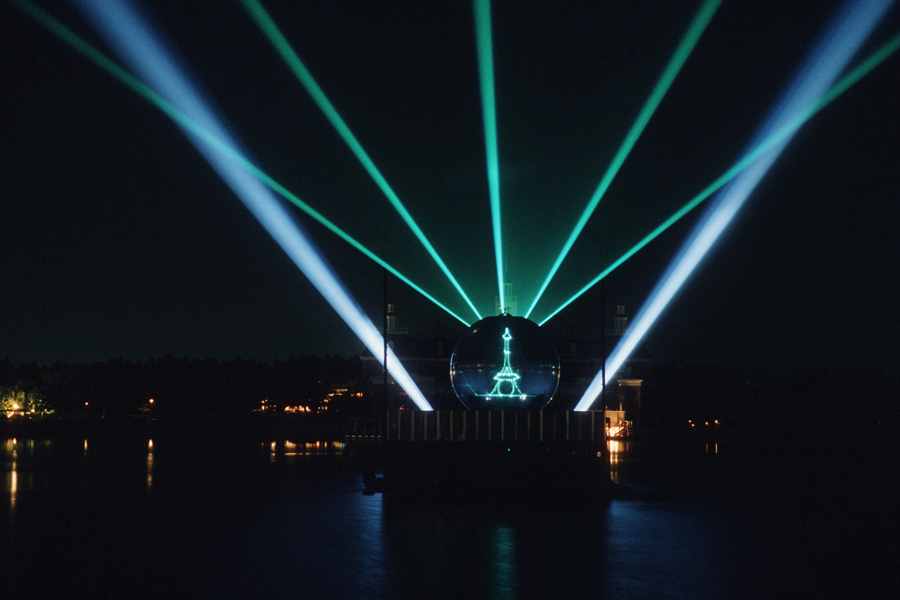
In 1984, audio engineer Don Dorsey returned to the proverbial keyboards that had created the Main Street Electrical Parade a decade earlier. There, he orchestrated a new after-dark show for the still-new EPCOT Center. While the resulting Laserphonic Fantasy might not sound familiar, its next evolution would. In 1988, Laserphonic Fantasy would be updated and renamed IllumiNations (which, along with its 1999 IllumiNations: Reflections of Earth iteration, Dorsey also oversaw).
Even in its early incarnation, Laserphonic Fantasy established a few tried-and-true hallmarks of the “nighttime spectacular” genre, like synchronized musical scores, encircling viewing areas, fountains, and fireworks barges. It also included the first ever use of laser graphics projected onto screens made of water droplets. But most importantly to then-new CEO Michael Eisner, the show that would become IllumiNations had made a stellar impact on dining reservations in EPCOT’s World Showcase…
So is it any surprise that – according to Dorsey’s retelling – as Disneyland leadership exited an early meeting with Eisner, the new CEO allegedly called after Barnette Ricci, “Hey, have you ever thought about doing a show on the river?”




